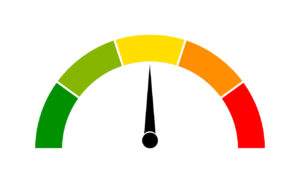Curating the week in wellness June 1–4, 2021: Celebrating Pride Month, new vaccine incentive guidance, and more
The week’s essential content and fresh industry pickings for those dedicated to employee well-being.

Good morning, wellness, HR and comms pros.
We hope you enjoy this week’s collection of thought-provoking articles, savvy tips and takeaways.
As always, please get in touch with any ideas, suggestions or feedback on how we can serve you better. We are grateful for all the excellent work you do, so please keep it up!
1. Workers are quitting instead of giving up remote work.
Has your company settled on a post-COVID workplace strategy? Or are you just planning to summon workers back into the office as soon as possible? If so, you could have a bitter fight ahead.
According to Bloomberg, just 28% of workers are back inside buildings now—and scores of workers are resigning rather than giving up working from home.
The piece says:
“With the coronavirus pandemic receding for every vaccine that reaches an arm, the push by some employers to get people back into offices is clashing with workers who’ve embraced remote work as the new normal.”
Bloomberg continues: “But as office returns accelerate, some employees may want different options. A May survey of 1,000 U.S. adults showed that 39% would consider quitting if their employers weren’t flexible about remote work. The generational difference is clear: Among millennials and Gen Z, that figure was 49%, according to the poll by Morning Consult on behalf of Bloomberg News.”
This tension between workers who increasingly demand the freedom and flexibility of virtual work—and bosses who want the control, collaboration and culture afforded by a central workplace—will be one of the preeminent workplace wellness issues moving forward. How your company handles this massive challenge can profoundly tip the scales of morale and engagement—for better or worse.
2. EEOC issues new vaccine guidance.
After much anticipation (and confusion), the EEOC has released new guidelines on vaccine incentives. JD Supra explains two key points:
- If your employees voluntarily provide documentation confirming they have been vaccinated and got the shot on their own from a pharmacy, public health department, or other health care provider in the community, you can offer them any incentive you’d like with no apparent limitations.
- If your organization (or an entity acting on your organization’s behalf) administers the vaccine, you can still offer incentives – but they cannot be so substantial in value as to be considered coercive.
Of course, there are still limitations and considerations, here. Namely, providing ADA accommodations and ensuring confidentiality. And, as JD Supra writes, “A rule of thumb to keep in mind: the higher the value, the greater the risk your program will be seen as unnecessarily coercive and therefore in violation of the EEOC’s rules.” Otherwise, feel free to go nuts with the vaccine incentives.
3. Taking strides to close the racial wealth gap.
As President Biden announces steps to reduce the U.S.’s dreadful racial wealth gap, now is a great time to evaluate your own organization’s efforts toward this end. DE&I programs can certainly propel equity, but you must go beyond words and workshops. HR Dive offers four ways you can help:
- Be rooted in empathy.
- Normalize difficult conversations.
- It’s all hands on deck; DE&I is not just one person’s job.
- Be a proactive ally who shuts down microaggressions.
Gallup offers three more tactics:
· First, identify DEI priorities based on a rigorous assessment of the organization’s current state.
· Next, consider how the work will get done to create the organization’s future state.
· Finally, plan to sustain momentum.
Accountability is crucial, too. If you don’t deliver on promises made last year, you’ll quickly lose credibility, trust and momentum.
We won’t and can’t correct centuries’ worth of injustice overnight. But every company can do its part to uplift, promote, recruit and retain diverse candidates.
4. Maintaining mental health support—throughout the year.
The CDC reports that 42% of Americans have reported depression or anxiety symptoms during the pandemic. Porter Novelli shares how companies are responding:
- Saks Fifth Avenue marked this month through a series of in-person and online activations. At the brand’s flagship store, it is hosting an Intention Garden where customers can write and ‘plant’ their mental health intention. Customers can also use the space to write a letter to a person who supported them in their mental health work that Saks will then stamp and mail. Lastly, the luxury department store is utilizing its social media platforms to give space to mental health influencers and nonprofit partners of its foundation to share tips and suggested actions to further individuals’ wellness journeys.
- Selena Gomez’s Rare Beauty brand took this month to launch a Mental Health 101 campaign specifically designed to support Gen Z. The landing page for the initiative quotes the alarming CDC statistics that “suicide is the second leading cause of death in the Gen Z community and yet only 16 percent of all children receive mental health assistance in school.” The beauty brand is fighting to change these figures through a social media campaign and by bringing attention to the cause and to the company’s petition calling on philanthropists to fund access to mental health resources. Additionally, Rare Beauty will be encouraging and matching donations up to $200,000 to its Rare Impact Fund through the end of the month.
- Pinterest found users’ overall searches for ‘Mental Health Awareness Month’ on its platform doubled this year compared to last. In response to this finding, it devoted $10 million over the next year toward organizations working to close gaps in access, improve research and bring awareness to other mental health inequities. The social media company is also donating to and partnering with advocacy group #HalfTheStory “to inspire moments of digital wellness through conscious content and democratize tools for healthy tech consumption and effective advocacy.”
How is your company supporting workers’ mental health during this stressful era?
5. Eight principles to bolster financial well-being.
Truist shares solid steps toward greater financial peace of mind, including:
- Save for emergencies.
- Set a budget.
- Manage debt and your credit score.
- Protect what matters.
- Invest and save for retirement.
- Own a home—or rent the smart way.
- Focus on career development.
- Give back.
Helping employees follow and apply these principles to their lives will go a long way toward alleviating most folks’ biggest, most daunting stressor.
6. Celebrating Pride Month (meaningfully).
If your plan is to just swap your social media avatar for a rainbow flag, maybe think again.
LGBTQNation warns against indulging in “pink capitalism,” writing:
“While the business community has made strides in observing Pride with more substantial commitments to queer people, 2020 emphasized the need for companies to go even further. With a renewed focus on diversity, equity, and inclusion across all industries, tokenistic marketing won’t fly anymore.”
This year should be about authentic shows of support for LGBTQ staffers. To make sure your messaging is on point, check out Zoom Info’s guide to corporate pride, get up to speed on Pride Month events and reading materials, and review how other companies are getting involved.
7. Measuring remote-team performance.
To gauge and track employee progress, Gallup advises:
- Increase the frequency of check-in conversations with remote and hybrid workers.
- Think about location.
- Make milestones tangible.
- Be available.
- Don’t neglect your relationships.
- Think “equity” at every turn.
Gallup writes: “Managers who lead high-performing teams are willing to listen to their employees’ feedback and regularly solicit it. More importantly, they frequently act on it. Managers who model this kind of accountability inspire their team members to do their best work, too.”
8. How Verizon is supporting workers women.
HR Executive writes that the telecom titan has released a new “collaborative career engine for women everywhere,” explaining, “The program will offer free content, thought leadership from industry experts, training and networking opportunities.”
HR Exec adds:
“In addition to the new support systems that aim to elevate women in the workforce, Verizon revamped everything from development strategies to leave policies in order to strive to retain top diverse talent. For instance, it provided digital skills training for thousands of employees and expanded its backup care program for those balancing work and caregiving.”
9. Learning from S&P’s ESG resources and reporting.
Companies are increasingly relying on CSR and ESG efforts to bolster recruiting, retention and morale—and to boost the bottom line. But how should you report on such matters and initiatives?
S&P offers ESG tools that can help you surface meaningful ESG data, and its just-published CSR report offers a nice template for companies eager to report on its philanthropic goals and corporate sustainability.







